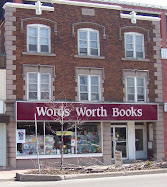
Like many Canadian women, I adored Ami McKay's first book, The Birth House, immensely. So (also like said Canadian women), I have been waiting with bated breath to see what yarn Ami would spin next. Her newest book, The Virgin Cure, releases next week on October 25th, but I got to crack open an advance copy last week.
The novel takes place in the tenement housing on the Lower East Side of Manhattan during the early 1870's. Moth is a "girl from the lowest part of Chrystie Street, born to a slum-house mystic, and the man who broke her heart." The summer that Moth turns 12, her mother sells her to a wealthy woman as her companion. Moth thinks that she may have it made as the carriage takes her away from the squalor and poverty that is Chrystie street and pulls her closer to the wealth of the Upper West Side. However Mrs. Wentworth deflates Moth's hopes of a better life with the first of many beatings and bizarre punishments.
After fleeing from the indentured servitude, Moth ends up in the wild world of Bowery. She discovers a world of pickpockets, beggars, sideshow freaks and prostitutes. Eventually she is taken in by Miss Everett, the owner of a brothel called "The Infant School." Again Moth is attracted to a warm bed, a full belly, and the promise of a better life. Through her new friendship with Dr. Sadie, a female physician that takes care of the brothel's girls, Moth begins to question the world around her. At the same time she begins to hear rumours of a "virgin cure", for men to rid themselves of syphilis.
I found Moth's resilience and determination to live a life that she could call her own admirable and inspiring. Her journey through New York's underbelly of the time kept me reading long after I should have turned out the light. McKay has created a well-rounded character who is both strong and innocent, wise and hopeful.
Dr. Sadie's character is based on McKay's great-great-great-grandmother, one of the few female doctors during that time period. Dr. Sadie (both in the book and in life) cared for city's poor and

destitute children. Her character in the novel shows a strong woman who did not let her education or wealthier background stand in the way of her determination to offer physical and psychological care to poor women and children. She tries in many different ways to convince Moth to give up her life in the brothel. It seems that Moth was the child she never had.
Another aspect of the novel that I appreciated, was little tidbits and sidebars throughout the book that explain the customs of the day. For example: an advertisement for Dr. Godfrey's cordial, instructions for hair work crafting, descriptions of a lady's gown, and so on. This was something that McKay used in The Birth House as well. It brings the time period to life in a memorable way.
I am looking forward to asking McKay if she collects this information while doing her research for the book, or if she makes them up as she is writing the novel. To that end McKay will be joined by Wayne Johnston and Anita Rau Badami for one of our final fall events at the Princess Cinema on November 16th. Click HERE for more information.
-Bronwyn


No comments:
Post a Comment